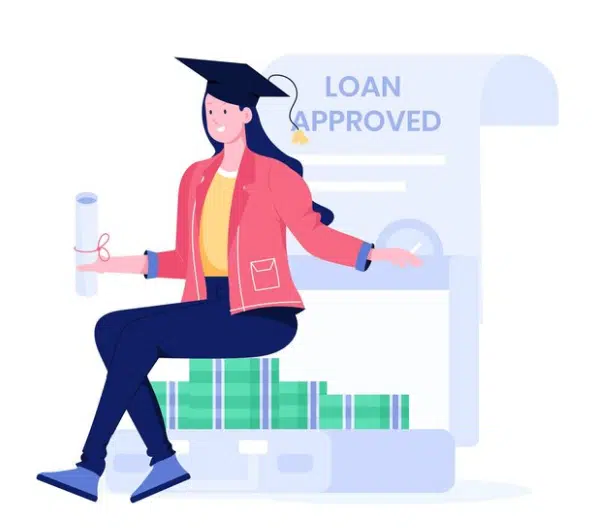Choosing the best repayment plan for student loans in the US can be a daunting task, given the multitude of options available. Navigating through these choices requires careful consideration of your financial situation and future goals. Student loans play a crucial role in education financing, and selecting the right repayment strategy can ease the journey towards financial freedom.
With various plans offering different benefits and drawbacks, understanding how each works is essential. This guide will provide insights into selecting the perfect repayment arrangement, ensuring that borrowers are equipped to make informed decisions about managing their educational debts. By exploring the options in detail, you can find a plan that aligns with your financial goals and current circumstances.
Understanding federal repayment options
Federal student loans offer a variety of repayment plans, each structured to accommodate diverse financial situations. Before settling on a plan, it is critical to familiarize yourself with federal options such as the Standard Repayment Plan, Graduated Repayment Plan, and various Income-Driven Repayment Plans (IDR). These information-rich programs provide different terms, with the Standard Plan offering predictable monthly payments over ten years, whereas plans like the Income-Based Repayment are tied to your earnings.
The Standard Repayment Plan is straightforward and suits those who can afford stable payments. Alternatively, the Graduated Plan starts with lower payments that increase over time, ideally matching an anticipated income rise. Income-Driven Repayment Plans, such as the Pay As You Earn (PAYE) or Income-Contingent Repayment (ICR), are particularly beneficial for those with variable or lower incomes, as payments adjust based on earnings and family size. These can extend the loan term, but the promise of possible forgiveness after a set number of years can be appealing.
Exploring income-driven repayment plans
Income-Driven Repayment (IDR) Plans align payment amounts with your discretionary income, providing relief to those facing financial instability. These plans, which include Income-Based Repayment (IBR), PAYE, and Revised Pay As You Earn (REPAYE), adjust annually to reflect changes in salary and family size. By capping payments at a percentage of income, IDRs prevent excessive financial strain during years of low earnings. Most IDRs extend the repayment period from 20 to 25 years, after which any remaining balance might be forgiven, though this forgiveness may be taxable as income.
IBR and PAYE typically set payments at 10-15% of discretionary income, making them ideal for borrowers whose loan balance significantly exceeds their annual income. REPAYE extends eligibility, offering similar terms to undergraduate loan holders regardless of when the loan was taken. While IDRs provide lower monthly payments and potential forgiveness, they might result in higher total interest accrual over the loan duration.
Evaluating Public Service Loan Forgiveness
The Public Service Loan Forgiveness (PSLF) Program offers enticing benefits for individuals dedicated to public service careers. Available to those who pursue jobs in government or nonprofit organizations, PSLF forgives the remaining student loan balance after 120 qualifying payments—roughly ten years of payments—while working full-time in an eligible role. This program’s hallmark is tax-free loan forgiveness, providing a significant incentive for those committed to serving the public.
To qualify for PSLF, borrowers must be on an Income-Driven Repayment Plan while ensuring all payments are made on time. Additionally, only Federal Direct Loans are eligible for forgiveness under PSLF, requiring borrowers with other federal loans to consolidate them into a Direct Consolidation Loan first. Understanding and regularly verifying employment and payment compliance through the program’s forms is also a crucial step in ensuring eligibility.
Considering private loan repayment strategies
While federal loans offer standardized repayment options, private student loans present a different set of challenges and opportunities. Private lenders often do not offer the same flexible repayment plans or forgiveness options, thus requiring borrowers to develop personalized strategies to manage these obligations effectively. High-interest rates and variable terms necessitate careful scrutiny of all available alternatives, especially when faced with sizable debt.
One viable approach to handling private loans is refinancing. This involves renegotiating loan terms with your current lender or transferring the balance to a lender offering more competitive rates or favorable conditions. Refinancing can significantly reduce monthly payments and interest rates, especially for borrowers with good credit and steady income. However, it’s essential to weigh the benefits against the loss of any federal loan protections if considering refinancing mixed debt streams.
Evaluating refinancing as an option
Refinancing entails obtaining a new loan with an improved interest rate or suitable terms to replace existing high-interest loans, either federal or private. Borrowers often consider this option when interest rates drop or their creditworthiness has substantially improved since taking out the original loan. Refinancing can lead to significant savings over the life of the loan by lowering monthly payments or shortening the payoff period.
When contemplating refinancing, it is crucial to compare offers from multiple lenders to secure the best terms. Each lender might provide different interest rates, repayment periods, and eligibility criteria. Be aware that refinancing federal student loans into a private loan will result in the forfeiture of federal protections and possible forgiveness benefits, necessitating careful consideration and cost-benefit analysis.





